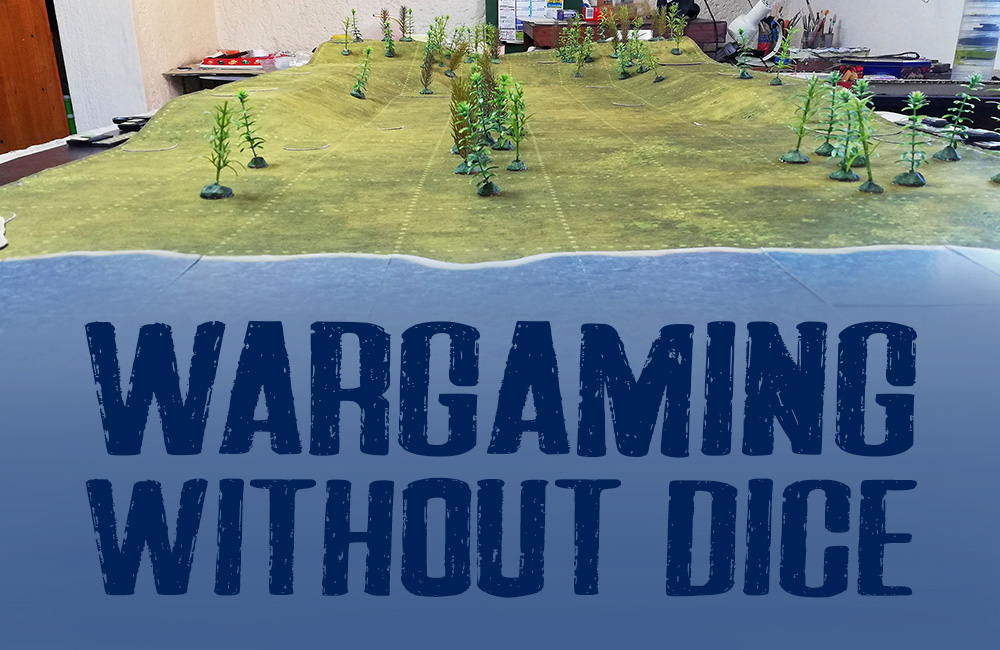Phil Sabin kindly offered to try out Optio online using its VASSAL module. Naturally I accepted. As an aside, I've always been a fan of Legion, IMHO the best dice and hex Ancients wargame out there, as it is not complex and produces very historical results. You can get it here with a write-up on Boardgamegeek here.
For this game Phil took the Spartans at the bottom and Yours Truly the Athenians at the top. We both deployed thus:
Turn 1. Athens.
I had started deployment so moved first, sending my Hoplites and Cavalry up to the stream. A good position to wait and see what Sparta would do.
Turn 1. Sparta.
Phil moved everyone up except his uncommanded Peltast unit on the right (uncommanded because not part of a battleline with its commander).
Turn 2. Athens.
I decided better to send my general over to the other flank to cover against Phil's cavalry. By the way, my hoplites had thus far moved under the control of the general since they started the game adjacent to his command, but from now on they would move under orders - which meant I should have put an orders counter in their square, but forgot. I put it there in the following turn.
Turn 2. Sparta.
Phil moves his infantry up to the stream whilst his cavalry cross it. His uncommanded Peltast unit on the right may move only half a square per turn: up to the square edge on turn 1, into the square in turn 2, up to the square edge in turn 3, and so on.
Turn 3. Athens.
I move my Cavalry alongside my Archers. My position is good - I have the hill and stream bonus - but my Archers cannot fight Peltasts and will evade if charged by them or anyone for that matter. That is a weakness Phil can exploit.
Turn 3. Sparta.
Phil spends a command point to stop his Cavalry. When under orders, a unit - once it has started moving - must advance at least one square per turn unless it spends a command point to stop or change direction. Commanders have only so many command points, and once these are used up he is limited in how many squares he can freely move from the square his last command point took him to.
Once stopped, a commander may wait as many turns as the player likes before moving again.
The uncommanded Peltast unit on the right keeps inching forwards.
Turn 4. Athens.
Time to get stuck in! My Athenian Hoplites are better than the mercenary Hoplites Sparta is using, and my plan on my right flank is to shoot Phil's Cavalry into impotence with my Cavalry and Archers and then deal with his Peltasts.
Turn 4. Sparta.
Under a barrage of arrows and javelins, the Spartan Cavalry pull back. The rest of the infantry stay put whilst that uncommanded Peltast unit keeps creeping forwards. Phil's plan is to use it to turn my flank.
Turn 5. Athens.
Chaaarge! The Athenian Hoplites close with their Spartan counterparts for a strictly drawn fight hence no effect. Neither side's commander is wounded, yet.
Meanwhile the Athenian Cavalry move up and shoot the Spartan Cavalry to rout. Those archers did their job. Phil has lost 2 cavalry stands and their commander (which has no friendly unit of his command to flee to). 1 loss point for each cavalry stand and 2 loss points for the commander (a commander is worth half the loss points of a general, so the number in the red box is halved).
Turn 5. Sparta.
Those Peltasts keep plodding on....
Turn 5. Melee.
Drawn fights, so everyone drops a morale interval (unlike charge combat where drawn fights have no effect). The commanders involved in the melee are thus far unscathed.
Turn 6. Athens.
I'm uneasy about that Peltast unit on my left flank so decide to send the general to deal with it.
Turn 6. Sparta.
Phil's Peltasts charge my Archers and Peltasts, both of whom evade.
Turn 6. Melee.
Another drawn fight, but now the Spartan Hoplites drop to shaken whilst the better-quality Athenians remain firm. But bad news for the Athenians: their commander throws a double six and is killed! The Spartan commander is only wounded on a single six. He'll have stories to tell his grandchildren....
Turn 7. Athens.
I send in the Cavalry to keep that Peltast unit busy.
Turn 7. Sparta.
And in go Phil's Peltasts. The leftmost unit forces my Archers to evade right off the battlefield and they count as routed. My own Peltasts on the right naturally don't evade as they would count as lost as well. They stand their ground for a drawn fight.
Turn 7. Melee.
Even though Phil's Hoplites are shaken and mine are firm, melee combat is still drawn. My leftmost Hoplite unit had charged over a stream hence Phil's Hoplites, defending the stream, get a high white modifier, converting their highest shaken interval to firm. On the right, Phil's commander also gives a high white modifier and that unit also fights as firm. In consequence everyone loses a morale interval.
The problem now is that Phil's Hoplites are on their lowest morale interval and nothing can prevent them from routing in the next melee, which would send his entire army packing. So we decided to call it a day.
Phil liked some aspects of Optio but not others. He gave me some valuable input, for example that skirmisher foot should outshoot light horse since the latter have fewer riders than the skirmishers. Duly amended. And thanks again for the game. 🙂




















Getting a game of Optio in with Phil Sabin is a bit of coup! Well done :)
ReplyDeleteWe play fairly regularly online - Legion and FD Lite thus far. We'll be looking at his Waterloo game before too long.
ReplyDelete